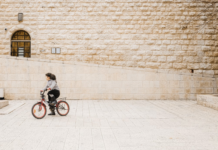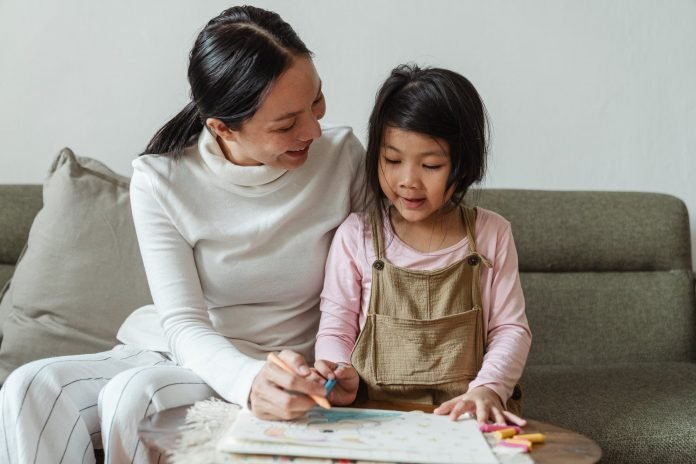Last Updated on March 22, 2024 by Nasir Hanif
One of the most crucial parts of learning is the idea that all students are learners, often known as collective efficacy. This is especially crucial as students return to the classroom after a year and a half of learning experiences that have varied in quality.
According to studies, in order to fully reap the benefits of collective efficacy on student learning, schools must build and maintain a learning culture. Here are three steps to teaching the belief that all children are learners, as well as examples of how to apply this philosophy.
Tips for Creating a Learning Environment
1. Keep the students in mind when developing and reviewing classroom practises. What will students learn, how will they learn it, and how will they demonstrate their understanding? These questions are centred on the progression of the learning experience, with a focus on the learner.
For example, at a recent teacher planning conference that I attended, the teacher first identified the book she would read to the class and the skill she would practise during the read-aloud.
While these are undeniably important components of the lesson, they put a greater emphasis on the teacher than on the student.
The following questions refocus the conversation on the lesson’s aim, which is to teach students how to make responsible decisions by studying the book’s characters and their behaviours.
After listening to the storey, students would create a storyboard illustrating the events and the character’s decision, as well as an alternate decision and different endings.
The teacher’s role would be to lead the students through the read-aloud and modelling exercises, as well as providing feedback as they worked in groups to finish the storyboard.
You emphasise the importance of learning and the learner when you describe classroom situations through the eyes of a student. Adults’ behaviours are now primarily concerned with how they will affect and assist kids.
Students are aware of what they’re learning and how they’re learning it, which allows them to take an active role in their education.
2. Develop an asset-based learning plan. Students’ assets are qualities that they bring to the classroom that are valuable. Some assets are academic, while others contribute to the learning community in the classroom through temperament, character traits, experiences, and hobbies.
For example, biliteracy is an important talent. Everyone learns a new language when native Spanish speakers learning English cooperate with other students in the classroom to identify items in both English and Spanish.
When sitting next to a student who is having a bad day, an empathic student uses their strength to help their friend feel better.
It is vital that teachers recognise children’s talents and abilities when they share them. A spoken, visual, or written signal might be used to recognise someone.
As a teacher, I used to send a message home to one of my middle school students’ parents every Friday. The note praised the student’s contributions to the classroom community as well as their academic development and accomplishments.
I kept track of who received the notes and made sure that each student’s parents received one at least once a semester.
The abilities, methods, and background knowledge that students bring to class are their academic assets. When teachers use earlier learning as a starting point for instruction, they are building on pupils’ strengths.
Teachers can achieve this in a variety of ways, one of which is through providing feedback to their students.
Students should be given verbal and written feedback that outlines what they can do, what they need to improve on, and how they can achieve their goals.
Students benefit significantly in their learning when they receive clear, practical feedback that corresponds to the stated learning objectives; they hear the message that they are learners who are engaged in an active and ongoing process of learning.
With constant modelling and targeted instruction, students can learn to self-regulate and manage their own learning.
3. Redirect attention away from the problem of learning loss. Instead, concentrate on the entire learning process. Due to the emphasis on what they didn’t understand the previous year, students may unwittingly be receiving the message that they can’t catch up.
Educators can deal with this by being highly familiar with normal learning progressions, which offer new abilities while simultaneously reinforcing existing ones.
Knowing how standards are linked can assist teachers in encouraging students as they go along the continuum and sending a message to their students about the value of a growth mindset.
Looking at the New York State English Language Arts standards, for example, a teacher can see how the skill of producing evidence to support an argument grows over time. Each grade-level standard focuses on a distinct aspect of instruction:
Students in third grade use evidence to back up their claims.
Facts and details are important to fourth graders.
Fifth graders use clear reasoning and appropriate proof.
The instructor can use the standards to adapt instruction despite the fact that they are grade-specific. The instructor can differentiate training based on the standards’ progressions after assessing the draughts. As a result, students engage in educational experiences that aid their academic growth.
Students whose work reveals that they can back up their statements with specifics are asked to sort sentence strips into three categories: argument, fact, and detail.
Another group of students, whose work demonstrates their ability to use logic and evidence, completes an exercise in which they rank a list of evidence from most relevant to least important in terms of how well it supports an argument.
As a result, all students are working toward the same goal of learning how to use evidence to support an argument, but they are coming at it from different directions.
Students engage in differentiated learning activities that demonstrate that they are all approaching learning from a strong place.
These actions can aid in the development of a learning culture and the improvement of collective efficacy. Students must identify as learners at all times and have a sense of belonging to a community that values all types of learning.If you are in need of great tutoring Calgary or online tutoring Calgary check out GettaTutor.com
Read More: Electricians Insurance: Costs And Coverage



























